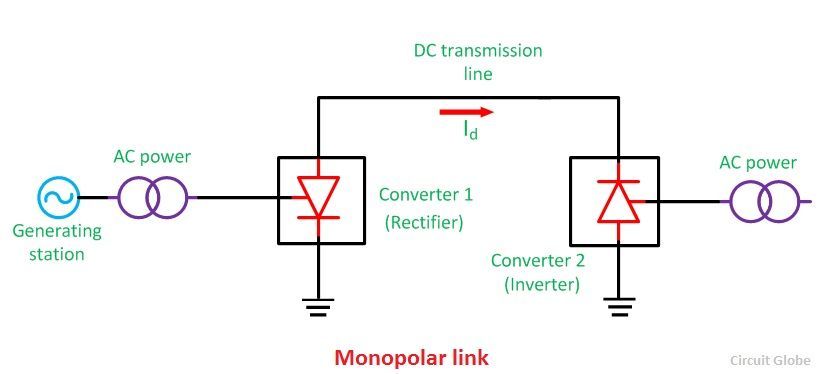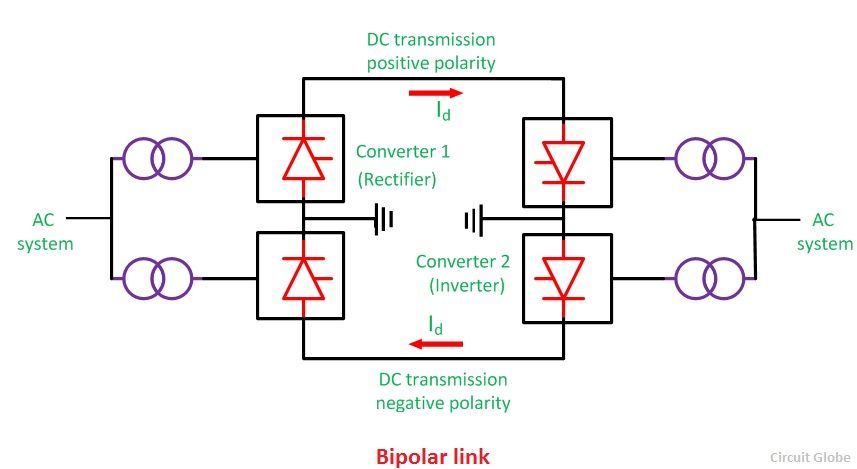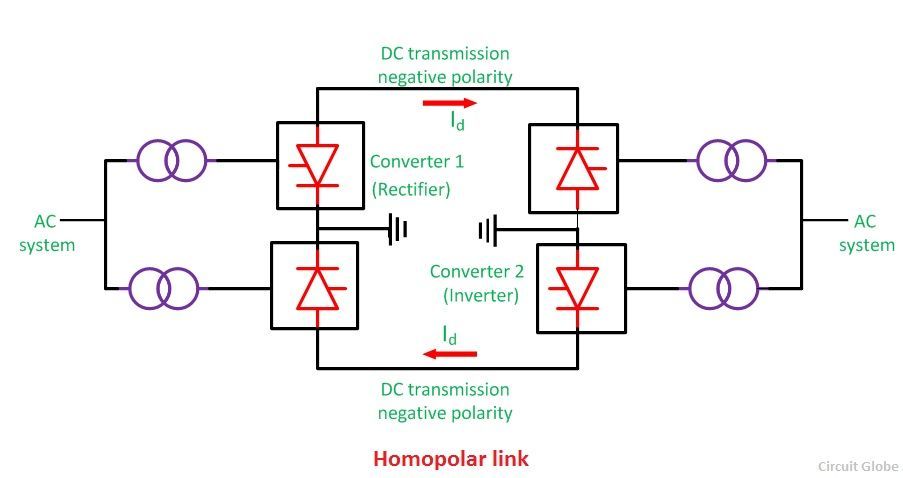In the previous topic, we learn about the HVDC transmission, which is economical for long distance power transmission, and for the interconnection of two or more networks that has different frequencies or voltages. For connecting two networks or system, various types of HVDC links are used. HVDC links are classified into three types. These links are explained below;
Monopolar link – It has a single conductor of negative polarity and uses earth or sea for the return path of current. Sometimes the metallic return is also used. In the Monopolar link, two converters are placed at the end of each pole. Earthing of poles is done by earth electrodes placed about 15 to 55 km away from the respective terminal stations. But this link has several disadvantages because it uses earth as a return path. The monopolar link is not much in use nowadays.
 Bipolar link – The Bipolar link has two conductors one is positive, and the other one is negative to the earth. The link has converter station at each end. The midpoints of the converter stations are earthed through electrodes. The voltage of the earthed electrodes is just half the voltage of the conductor used for transmission the HVDC.
Bipolar link – The Bipolar link has two conductors one is positive, and the other one is negative to the earth. The link has converter station at each end. The midpoints of the converter stations are earthed through electrodes. The voltage of the earthed electrodes is just half the voltage of the conductor used for transmission the HVDC.
The most significant advantage of the bipolar link is that if any of their links stop operating, the link is converted into Monopolar mode because of the ground return system. The half of the system continues supplies the power. Such types of links are commonly used in the HVDC systems.
 Homopolar link– It has two conductors of the same polarity usually negative polarity, and always operates with earth or metallic return. In the homopolar link, poles are operated in parallel, which reduces the insulation cost.
Homopolar link– It has two conductors of the same polarity usually negative polarity, and always operates with earth or metallic return. In the homopolar link, poles are operated in parallel, which reduces the insulation cost.
 The homopolar system is not used presently.
The homopolar system is not used presently.

What are the disadvantages of Homopolar HVDC link?
The homopolar link has large earth return current which is the major disadvantage of the homopolar link.
Why in monopalar single conductor of negative polarity used ? What happened if +ve polarity conductor are used ?
Both the positive or negative polarity conductor is used in the monopolar link. The working of the link does not depend on the polarity of the conductor. Usually, the negative polarity conductor is used in the monopolar link because the corona effect is less on it.
Corona and RI increased.
Thanks to you for explaining HVDC in a very simple way, easy to read understand, really impressive.
where is the electrode in monopolar link
The electrode is the wire that used for earthing the converters.
Sir what is negative polarity conductor
What are the demerits of this three links
In a bipolar hvdc system the current in both the poles are opposite direction. What about the direction of power flows in both the poles ?
what is meant by positive or negative polarity in HVDC bipolar link…
What is Ohm’s law? I’m getting confused with the derivation.
https://www.youtube.com/watch?v=b181cM01kiM